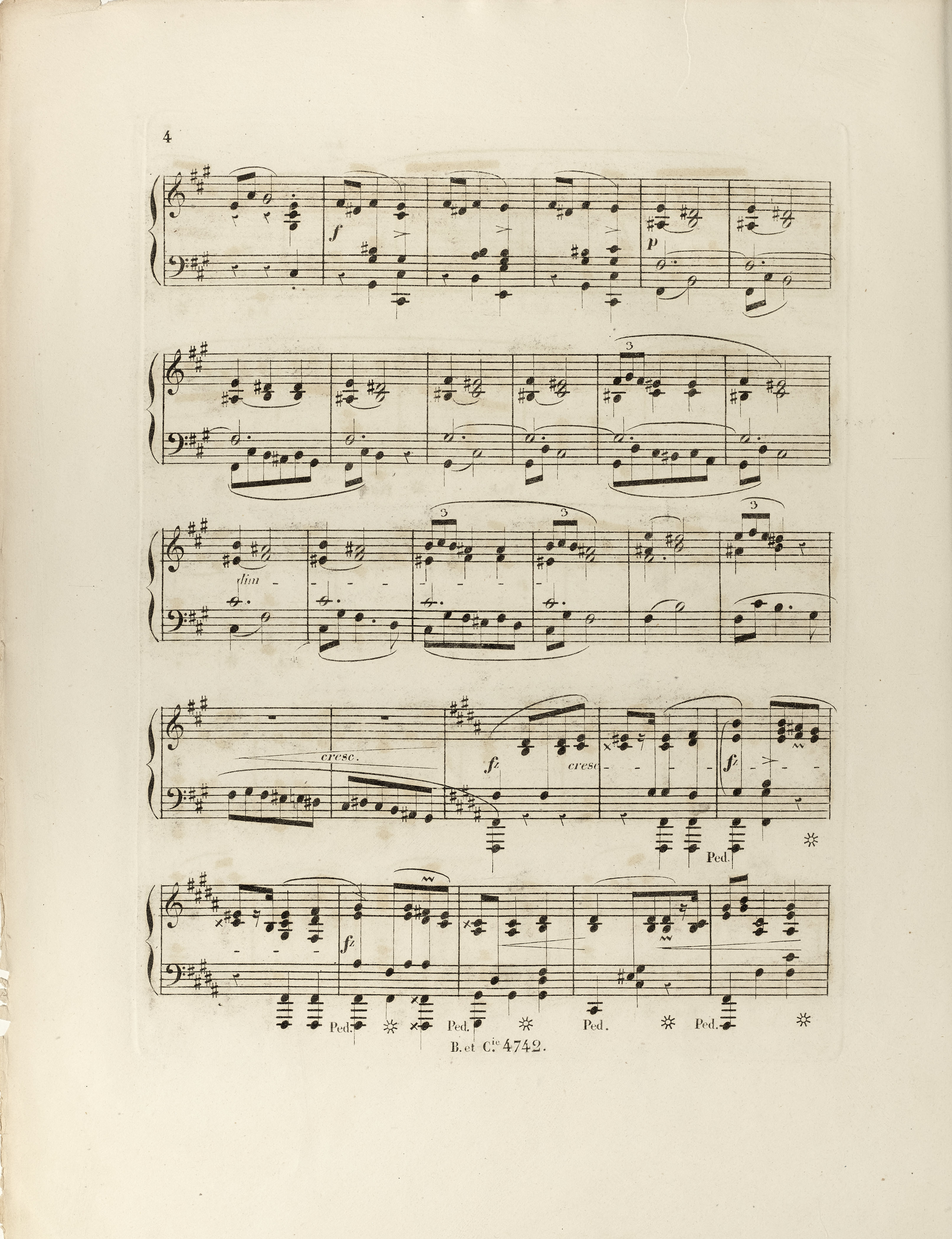



Bars 53-64 constitute an ascending modulating progression, whose particular four-bar elements are kept in the keys of B major, C major and F
major and F major, respectively, and are subsequently melodically enriched by the introduction of an each time greater number of quavers to the outermost voices. This principle applies both to AI and the published version; it also concerns the mutual relation between these two versions – e.g. in bar 55 AI includes 5 notes in the bass voice, whereas both FE (→GE,EE) in this bar and AI in bar 59 already contain 6 notes (another difference of this kind – see bar 62). This gives rise to the question of whether the number of played notes in the tenor voice (increased in FE1 with respect to AI, in which these notes are played only once at the beginning of each four-bar section) can also be considered an element enriching the published version. According to us, the answer is no:
major, respectively, and are subsequently melodically enriched by the introduction of an each time greater number of quavers to the outermost voices. This principle applies both to AI and the published version; it also concerns the mutual relation between these two versions – e.g. in bar 55 AI includes 5 notes in the bass voice, whereas both FE (→GE,EE) in this bar and AI in bar 59 already contain 6 notes (another difference of this kind – see bar 62). This gives rise to the question of whether the number of played notes in the tenor voice (increased in FE1 with respect to AI, in which these notes are played only once at the beginning of each four-bar section) can also be considered an element enriching the published version. According to us, the answer is no:
- f
 played twice (in bar 53 and in bar 56) most probably resulted from an oversight of a tie between bars 55-56, since in the next four-bar section g
played twice (in bar 53 and in bar 56) most probably resulted from an oversight of a tie between bars 55-56, since in the next four-bar section g is played only once, which is contrary to the aforementioned tendency to gradually increase the number of played notes;
is played only once, which is contrary to the aforementioned tendency to gradually increase the number of played notes; - Chopin questioned the intentionality of omitting ties in bars 61-64 by adding them while proofreading FE2.
Therefore, in the main text we give the consistent notation of AI with 3 notes sustained for 4 bars. Consequently, with respect to the version of FE1 based on [A] we add a tie in bars 55-56 (such an addition was also performed in EEW), while in bars 61-64 we include the Chopinesque proofreading of FE2 (→EE).
Ties to the discussed tenor voice notes were also standardised in GE1 (→GE2), applying a statistical criterion to the proof copy of FE1 serving as the basis – wherever differences between the particular four-note sections appeared, it was the more frequent version that was applied. Above all, the tie in bars 59-60 was omitted, since FE1 does not contain ties in bars 55-56 and 63-64; on the other hand, ties were added in bars 61-63, since respective ties are included in FE1 in bars 53-55 and 57-59.
GE3 added a tie in bars 63-64, probably on the basis of the text of FE2.
Compare the passage in the sources »
category imprint: Differences between sources; Editorial revisions; Source & stylistic information
issues: EE revisions, Errors in FE
notation: Rhythm

